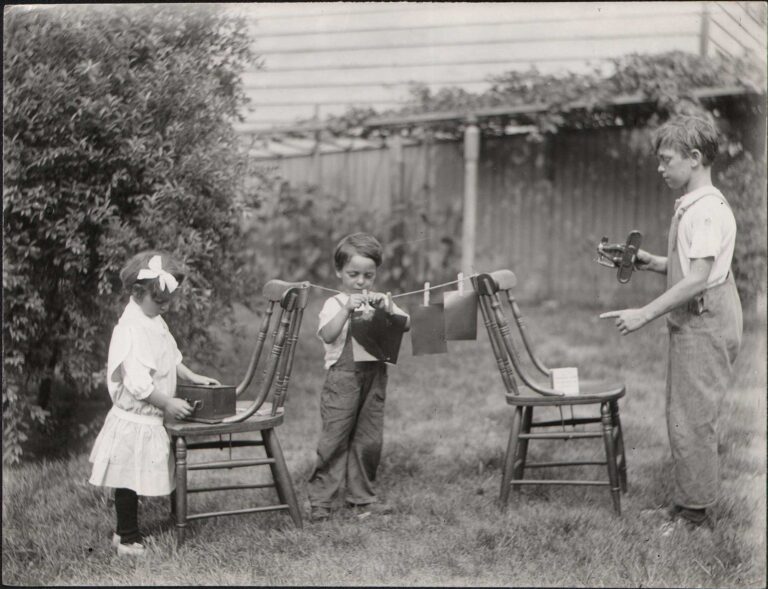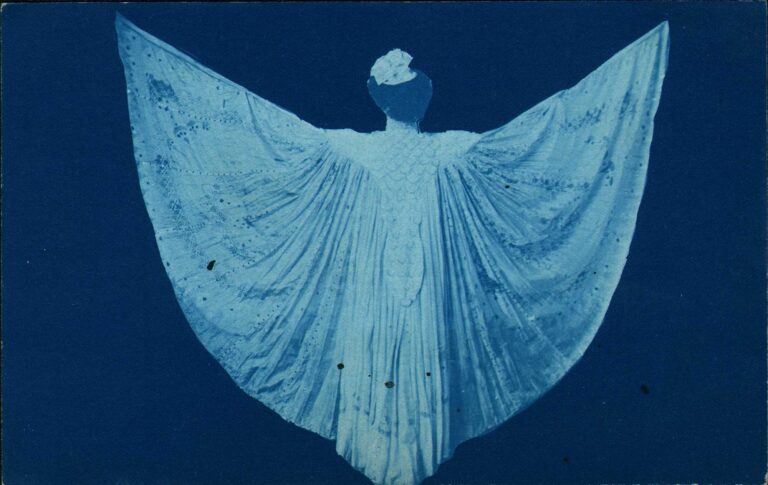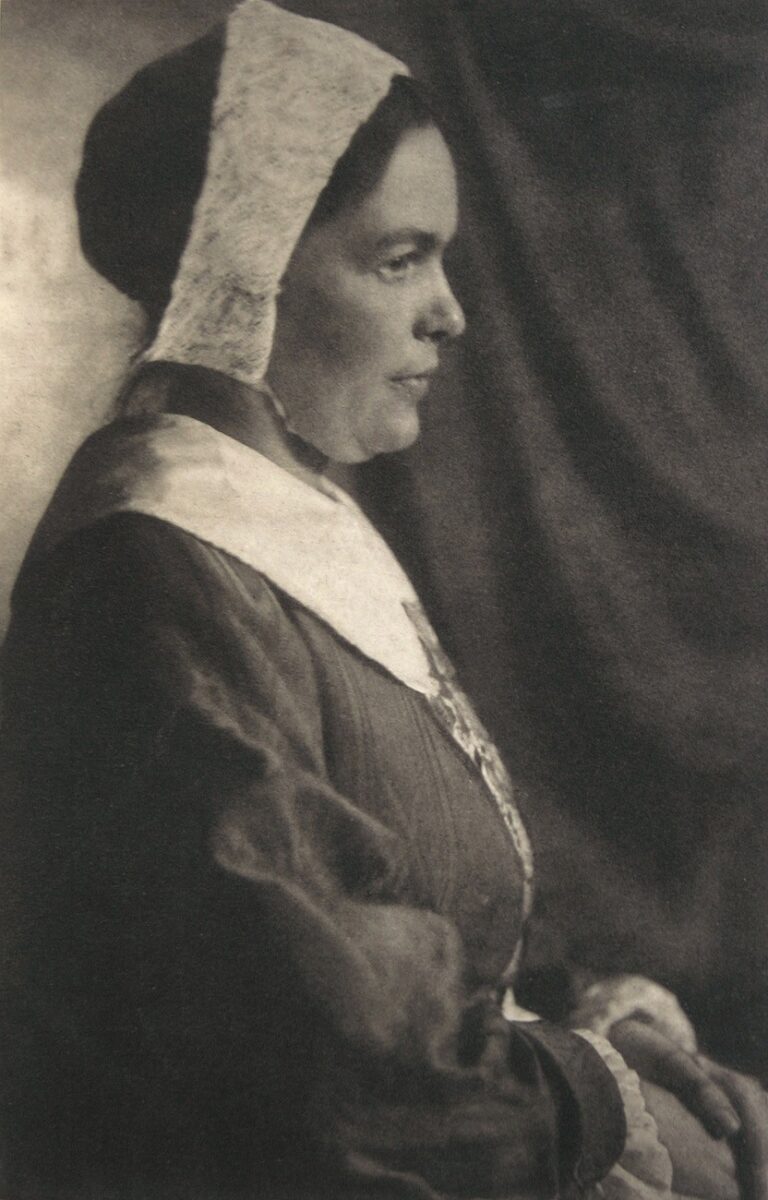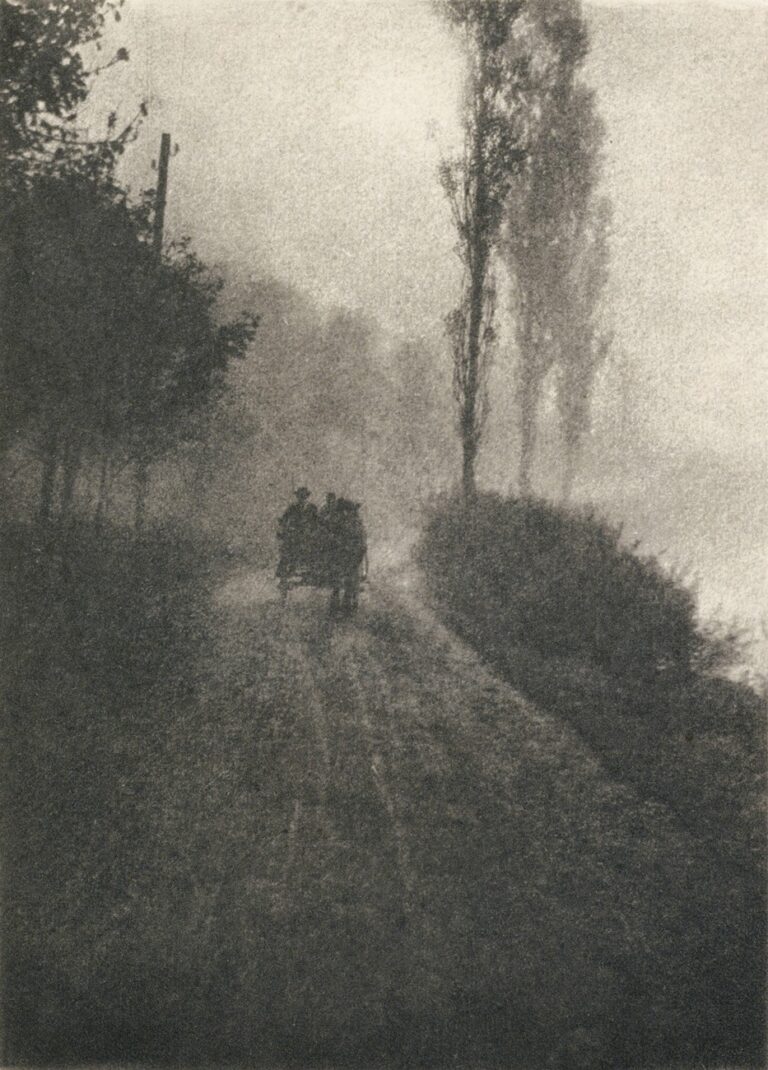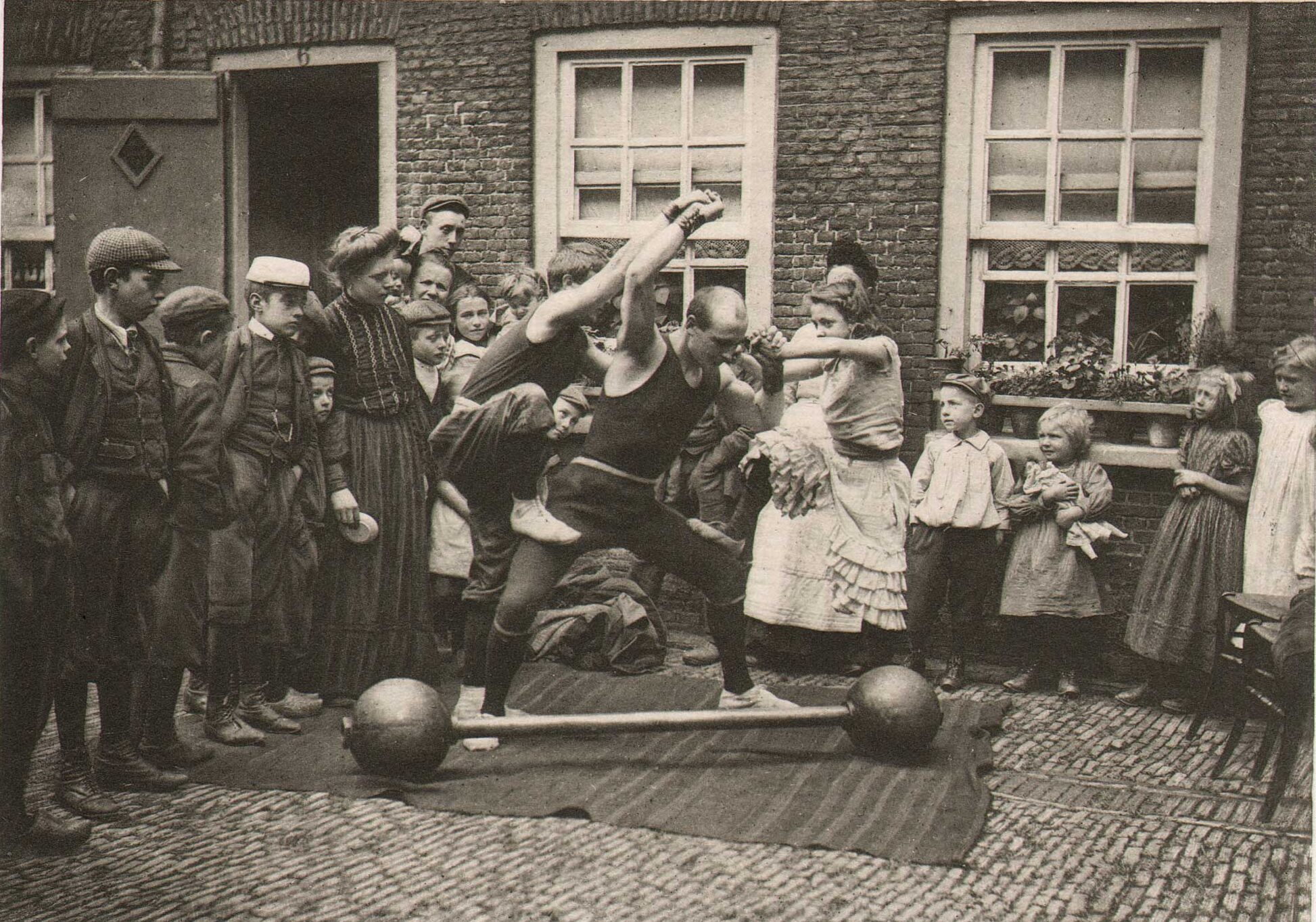
Straatkunstenmakers | Street Artists
Street-performing acrobats put on a show for a crowd on a Dutch street.
Editorial comment for this plate:
Our plate. (translated)
The plate of No. 8 gives a characteristic, real Dutch scene from the slums, of Mr. H. van Berssenbrugge in Rotterdam. Whoever might think, with the natural attitude of all the figures, that he is dealing with a completely unexpected, unnoticed snapshot, is mistaken.
The whole thing was arranged by the recorder and recorded with the tripod, with time exposure, which is indeed evident with the complete effect of the plate. Our thanks to Mr. van Berssenbrugge for his beautiful negative. We recommend ourselves once again for the sending of beautiful work, for reproduction. In progress now three more very beautiful recordings, for the next three months. (appeared in February 29, 1908 issue)
Henri Berssenbrugge: 1873-1959
Berssenbrugge belonged to the group of ‘Pictorialists’ and was much influenced by the Impressionists. From 1917 to 1942 he lived in the Hague, where he was famous for his portrait photography of actors, writers and politicians. – Christie’s Auction House biographical description- 1992
Henri Berssenbrugge and Bernard Eilers were arguably the most important Dutch Pictorialist photographers. Berssenbrugge attended the Academy of Fine Arts and Applied Sciences in Rotterdam to learn the art of drawing. Before he finished his studies in 1900 he had already worked as a painter and decorator in Gouda and Keulen. After coming into contact with photography by chance in that same year, he immediately adopted this medium that enabled him almost instantly to form an image of what his alert eye saw. Within a few years he mastered all the different processes of his time, such as the gum bichromate, carbon print, bromoil print and Erwino print, named for its German inventor, Erwin Quedenfeld, a photographer friend of Berssenbrugge. Berssenbrugge’s work was related to international Pictorialism and to various forms of modern art, but it also bears the marks of a man determined to be an unconventional, one-of-a-kind artist. In the second decade of the twentieth century he tried to free his work from nature and formed his own two-dimensional photographic style, inspired by the decorative arts. (1.)
1. Biography: Henri Berssenbrugge: Published: In atmosferisch licht : Picturalisme in de Nederlandse fotografie, 1890-1925: Maartje van den Heuvel: 2010: Museum Het Rembrandthuis, Amsterdam. (p. 24)
